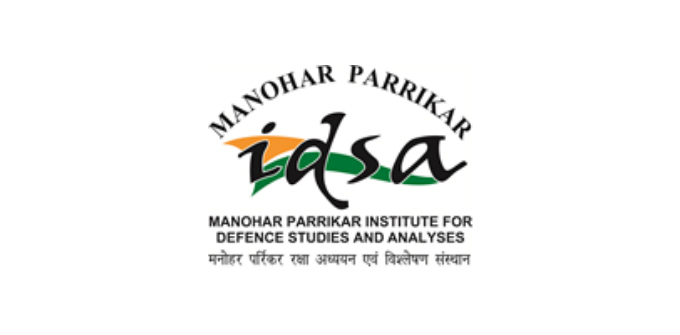
- This event has passed.
Report of the Monday Morning Meeting on “Emerging Debates on Deep Seabed Mining”

The Monday Morning Meeting at the Manohar Parrikar Institute for Defence Studies and Analyses (MP-IDSA) on 22 September brought the depths of the ocean to the surface of strategic debate. Dr. Bipandeep Sharma, Research Analyst at MP-IDSA, made a presentation on “Emerging Debates on Deep Seabed Mining”. The session was steered by Dr. Uttam Kumar Sinha, Senior Fellow, and was attended by scholars of the Institute.
Executive Summary
The discussion shed light on the current debates around deep-sea mining — a domain that straddles science, environment, and geopolitics. Dr. Sharma underscored the need for a strong regulatory framework before commercial mining begins, warning of the immense risks to biodiversity and fragile ecosystems.
Dr. Uttam Kumar Sinha drew attention to China’s widening maritime footprint and its implications for India’s security and influence. Scholars raised questions on technology gaps, ecological concerns, and legal complexities. The consensus was clear: India must enhance its scientific, regulatory, and diplomatic capacities while balancing environmental protection with national interest.
Detailed Report
Dr. Sharma began by situating the debate in the larger global context. Many major powers and corporations, he noted, are holding back exploitation until the International Seabed Authority (ISA) finalises its rules. Beyond the 200 nautical miles of exclusive economic zones, it is the ISA — established under the UN Convention on the Law of the Sea (UNCLOS) — that regulates the seabed, designated as the “common heritage of humankind”.
But the heritage is fragile. The polymetallic nodules, sulfides, and cobalt-rich crusts found in these depths are not just minerals; they are habitats for unique and little-understood species. Mining them without adequate safeguards, Dr. Sharma warned, risks irreparable harm to marine biodiversity.
Dr. Sharma highlighted that while UNCLOS gives the ISA the mandate to regulate seabed resources, its mining code is still under negotiation. He further mentioned that the ISA to date has approved 31 applications submitted by 22 countries and companies to undertake exploration activities in deep seabed minerals in various parts of high seas. If commercial operations begin without binding rules, both legal authority and environmental protections could be undermined. He in his presentation pointed that the challenges to ISA’s authority are further compounded by unilateral actions such as the Executive Order (EO) signed by the U.S. President Donald J. Trump in April 2025. The order authorises U.S. Departments, under the Deep Seabed Hard Mineral Resources Act (DSHMRA), to issue exploration and exploitation licenses for seabed minerals even in areas beyond national jurisdiction. Dr. Sharma argued that as the United States is not a party to UNCLOS, this move bypasses the international framework established under the ISA and sets a dangerous precedent for global ocean governance.
Dr. Sharma in his presentation highlighted how corporations and states are increasingly intertwined in deep seabed ventures. He pointed that The Metals Company, a Canadian firm, is emerging as a private leader in polymetallic nodule extraction, while the U.S. has moved aggressively with executive orders to fast-track exploration permits.
The response has been polarising: environmental groups such as Greenpeace fear that unilateral moves could fracture multilateral governance and tip the balance toward exploitation.
Dr. Sharma stated that for India, the seabed is both a scientific frontier and a strategic imperative. Through ISA contracts, India holds exploration rights over 75,000 sq. km. in the Central Indian Ocean Basin for polymetallic nodules and an additional 10,000 sq. km. for sulphides.
Dr. Sharma outlined the “Deep Ocean Mission” — India’s flagship programme launched in 2021 with a budget of ₹4,077 crore. At its heart is “MATSYA-6000”, a crewed submersible capable of plunging 6,000 meters below the surface, being developed by National Institute of Ocean Technology (NIOT). Alongside, India is developing autonomous vehicles, advanced sensors, and marine biotechnology capabilities, aiming to turn oceanic exploration into a blend of science, strategy, and sustainability.
The discussion concluded on a forward-looking note. Dr. Sharma pointed to intriguing discoveries — such as “dark oxygen” production in the ocean’s depths and methane hydrates in China’s maritime zones — which underline both the promise and perils of ocean exploration.
The Biodiversity Beyond National Jurisdiction (BBNJ) Agreement was seen as a hopeful step, linking seabed governance to equitable sharing and conservation. Yet the uncertainties are vast.
Dr. Sinha stated, “Where there is wealth, people will exploit.” The real challenge is to ensure that the race for deep-sea resources does not undermine planetary health.
Key Takeaways
- Deep-sea mining is a frontier of science, strategy, and environmental risk.
- Regulatory clarity through the ISA is urgently needed before commercial exploitation.
- India needs to enhance and fast-track its technological, infrastructural, scientific, and diplomatic capabilities with regards to deep seabed mining.
- Sustainability, transparency, and equity must remain the guiding principles.
The session closed with consensus: deep-sea mining offers opportunities, but the oceans are not just another resource frontier — they are the planet’s last great wilderness, and their stewardship will test both national ambition and global responsibility.
Report prepared by Ms. Srotaswini Hazarika, Intern, Non-Traditional Security Centre, MP-IDSA.



